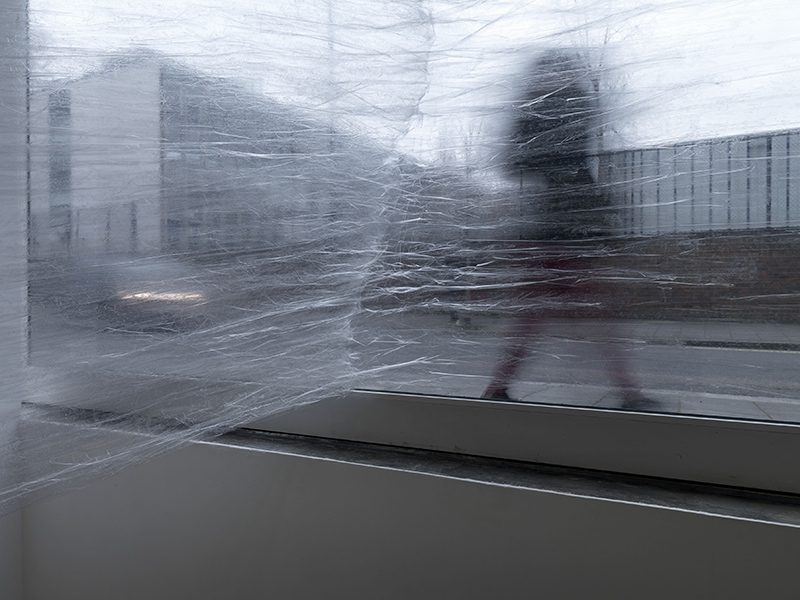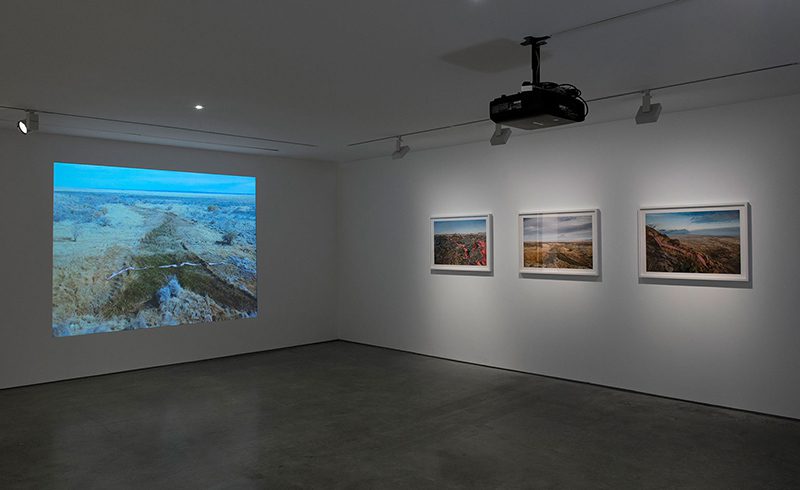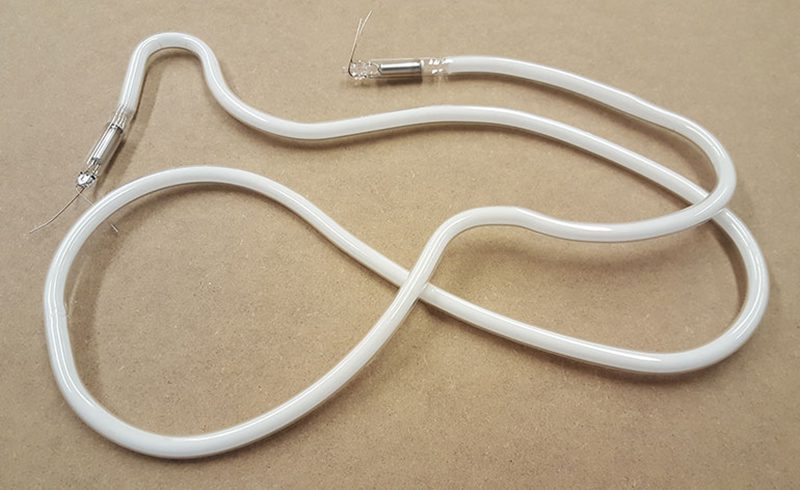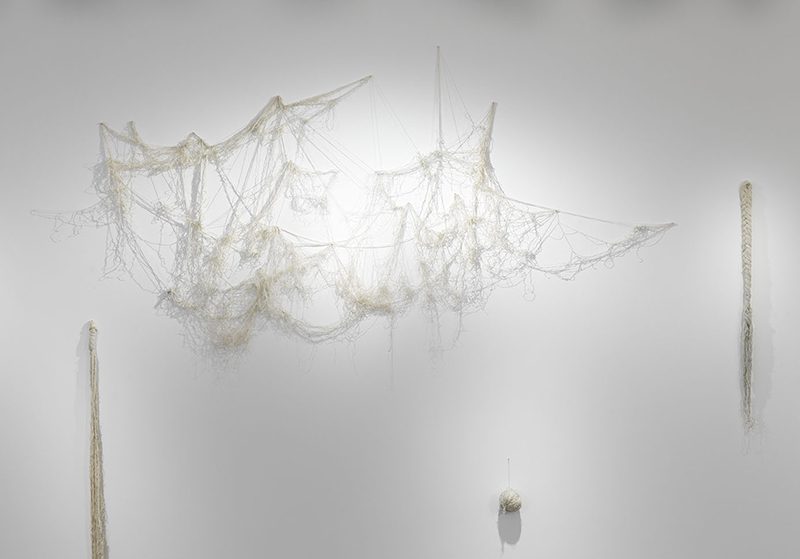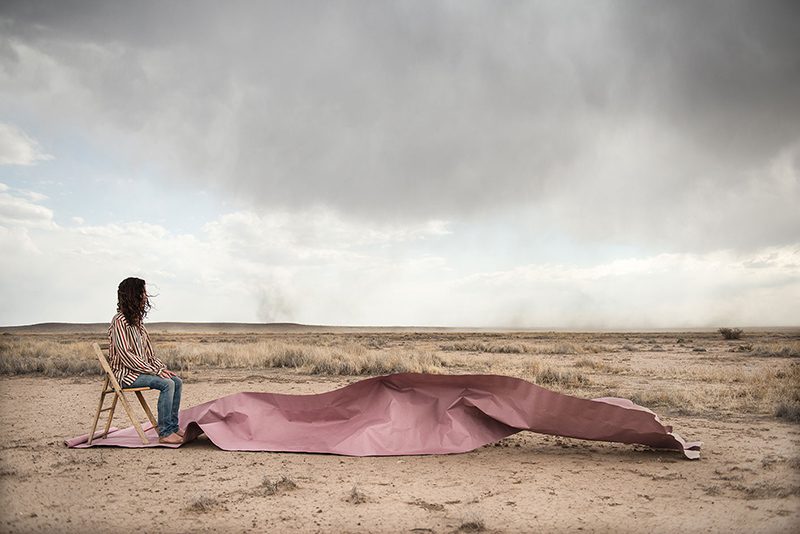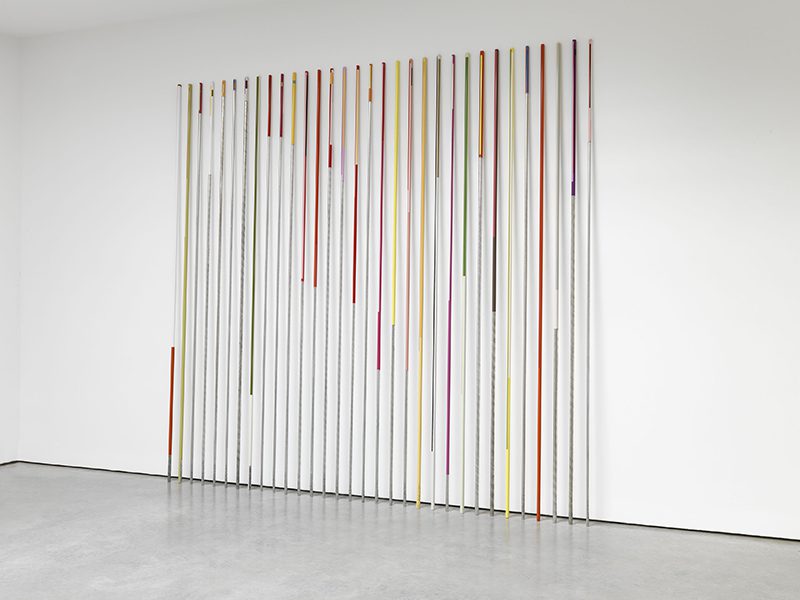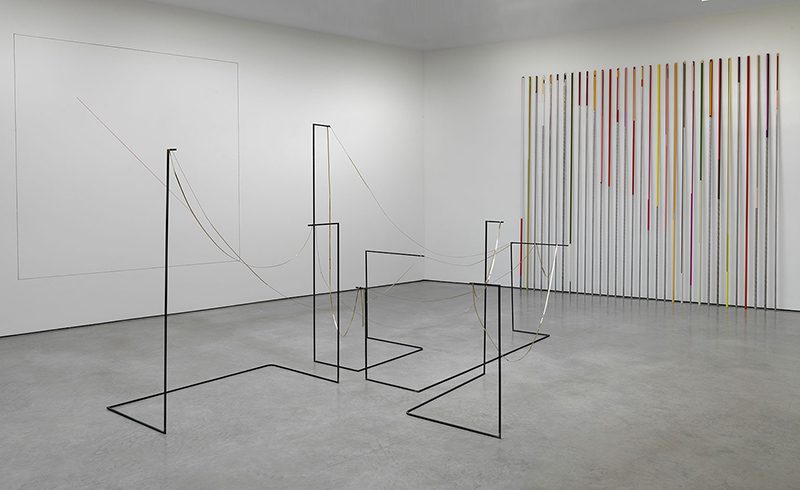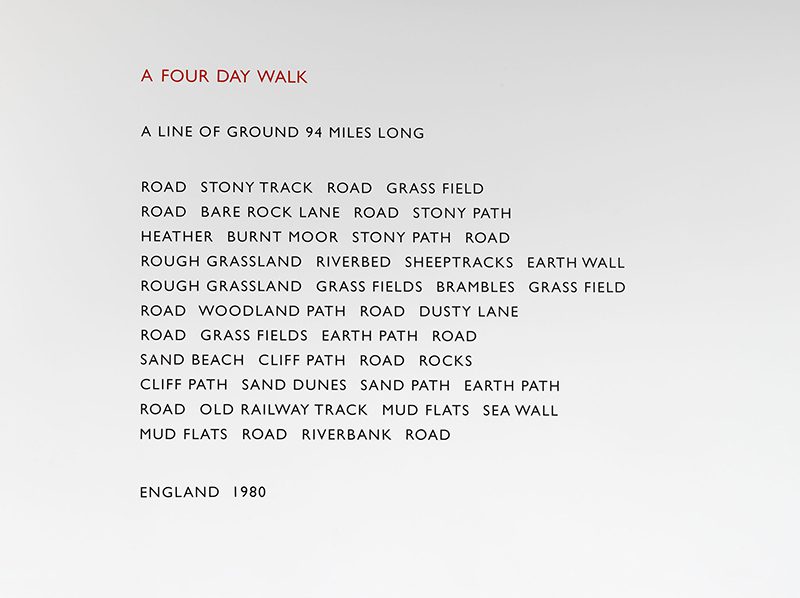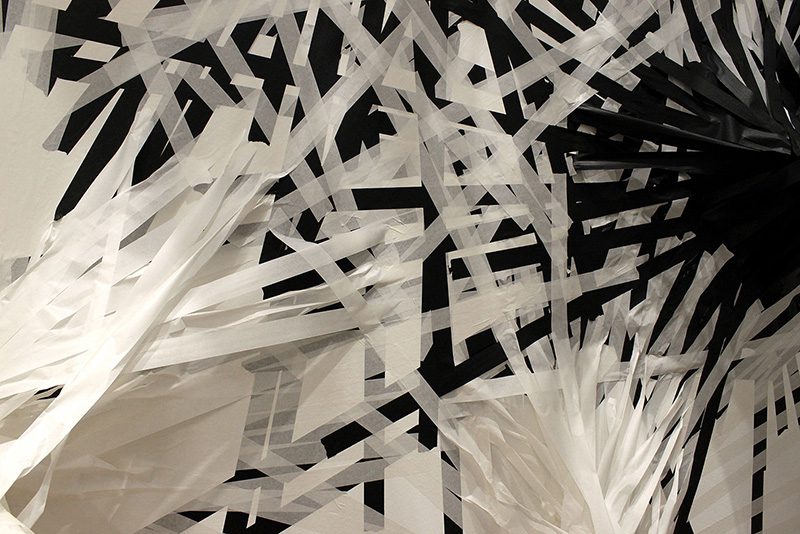ART CITIES: London-Line
 Artists have done many marvellous things with the continuous line. They have taken it places, crawling off the page or squiggling into three dimensions, becoming a physical thing of itself, freed of representational duties. The exhibition “Line” presents 15 examples of what artists, from Sol LeWitt, Susan Hiller, Richard Long and Julian Opie, have done with it.
Artists have done many marvellous things with the continuous line. They have taken it places, crawling off the page or squiggling into three dimensions, becoming a physical thing of itself, freed of representational duties. The exhibition “Line” presents 15 examples of what artists, from Sol LeWitt, Susan Hiller, Richard Long and Julian Opie, have done with it.
By Dimitris Lempesis
Photo: Lisson Gallery Archive
The exhibition’s starting point is Sol LeWitt’s “Wall Drawing #157”, first drawn to his instructions by Nicholas Logsdail the owner and co-founder of the Lisson Gallery in 1973 and re-drawn here. The earliest work of the exhibition is Tom Marioni’s “One Second Sculpture”, a photograph of a coil of metal whipping itself into a straightish line in mid-air. Jonathan Monk also lets his materials do what they will in “Fallen”, letting a length of rope, exactly his height, fall to the ground and remaking that exact form in neon tubing as a kind of self-portrait. Richard Long, famously, took the line outdoors, gently imposing his linear order on the natural world. Long, like Johnny Cash, walks the line. His “Four Day Walk”, leaves or records no visible trace on the landscape. It is merely a record of the types of places he saw walking in a 94-mile straight line. A recent work by Julian Opie also brings the natural world into the gallery via a black vinyl installation, “Pine Forest”. The vertical procession of tree trunks can also be read as a parade of silhouetted figures, a stream of barcode data or simply as abstract lines. Long’s ephemeral line contrasts poignantly with British artist K. Yoland’s recent photography series, “Border Land Other”, the result of a residency in Texas, shown alongside a film of her performance of the same name. The performer unfurls an unruly paper line, which refuses to settle in one spot, referencing the complexity of carving up land on a map and the arbitrariness of borders. Here the line describes not one person’s passage but instead a political boundary not to be crossed, namely the border between Texas and Mexico. Florian Pumhösl’s “Tract”, is a 16mm film animation of early dance notation (an inspiration to a number of artists and photographers in recent years). Maximilian Schubert hangs three dimensional linear sculptures on the wall while Athanasios Argianas drapes loops of brass ribbon, each etched with poetic suggestions of what it might be a measure of. Perhaps the most imposing piece in the show is Susan Hiller’s “Work in Progress” it is all that is left of a week-long performance piece in which she unraveled a painting on a canvas, before reassembling it into physical doodles. An installation by Susan Hiller, “Work in Progress” contains the residue of a week-long performance by the artist, which involved unravelling the canvas of a painting into its component parts, each day the resulting threads re-configured as a ‘doodle’ or ‘thread drawing’. Using the soft material of tape, Berlin-based installation artist Monika Grzymala and Seattle-based artist Victoria Haven create new site-specific works for the exhibition. Grzymala’s durational piece creates a densely crosshatched maelstrom blizzard of black, in contrast to Haven’s minimalist and geometrical abstractions; their delicate compositions worked out and painstakingly painted in advance. Participating artists: Athanasios Argianas, Ceal Floyer, Monika Grzymala, Victoria Haven, Susan Hiller, Sol LeWitt, Richard Long, Tom Marioni, Jonathan Monk, Julian Opie, Florian Pumhösl, Fred Sandback, Maximilian Schubert, K. Yoland and Jorinde Voigt.
Info: Curators: Mary Doyle & Kate, Lisson Gallery, 52 Bell Street, London, Dration: 22/1-12/3/16, Days & Hours: Mon-Fri 10:00-18:00, Sat 11:00-17:00, www.lissongallery.com

